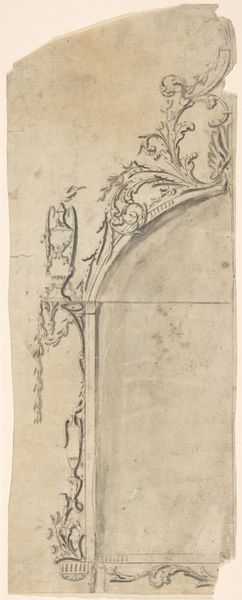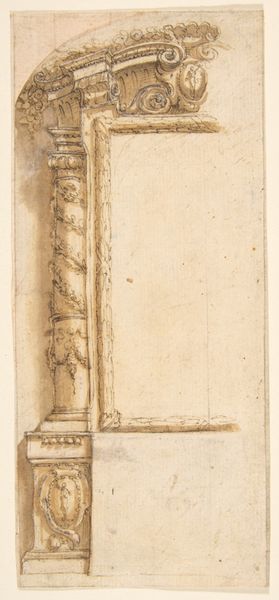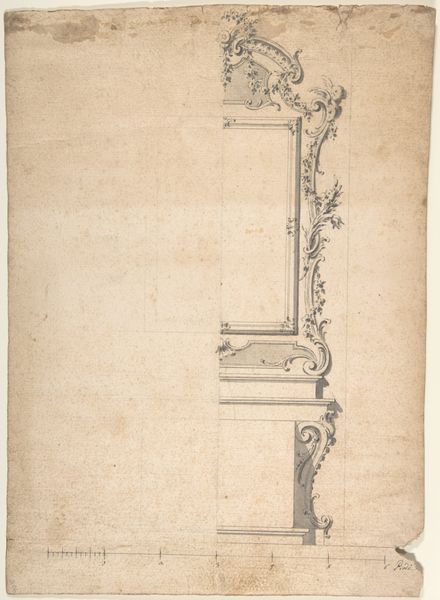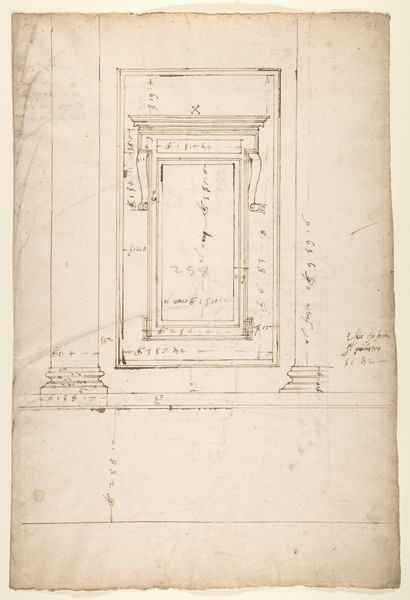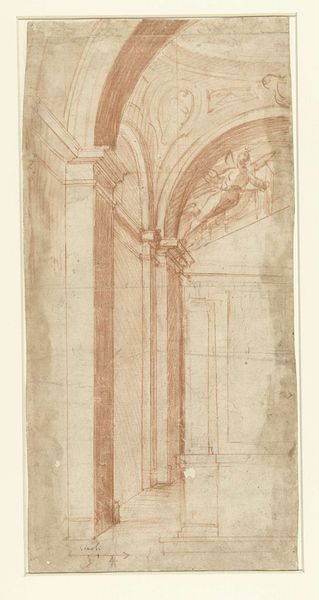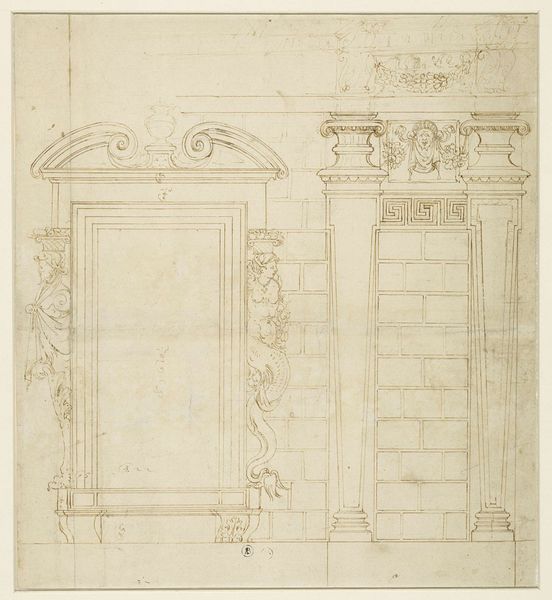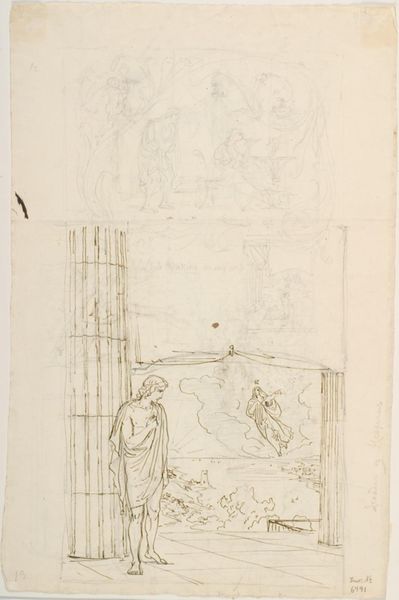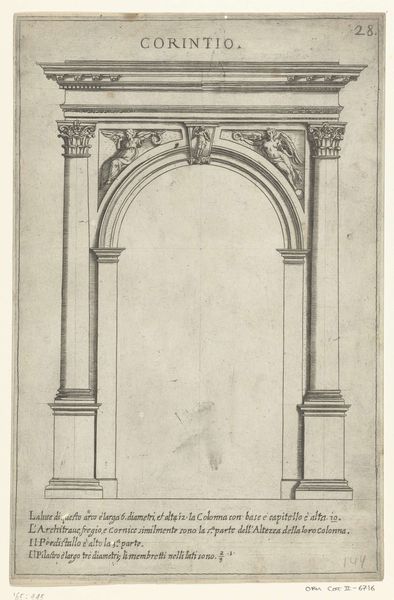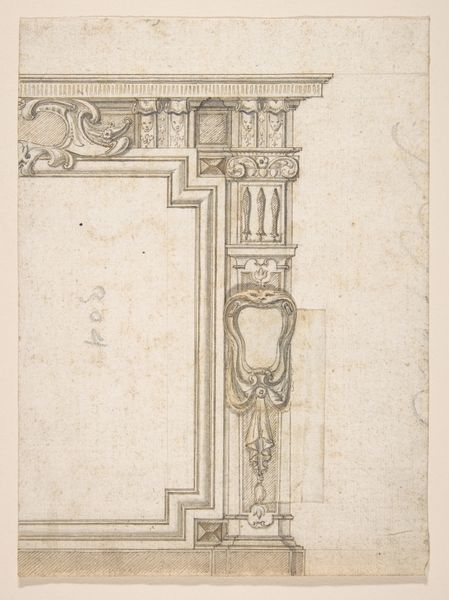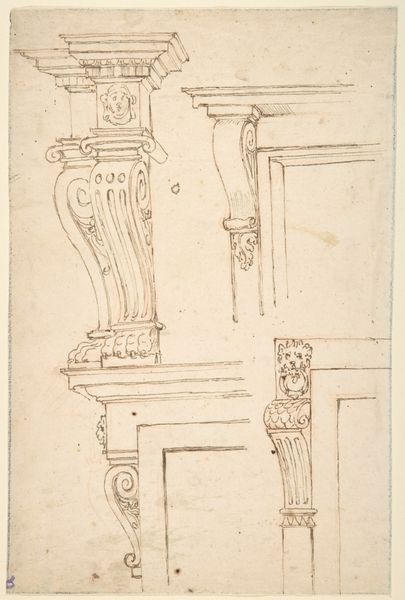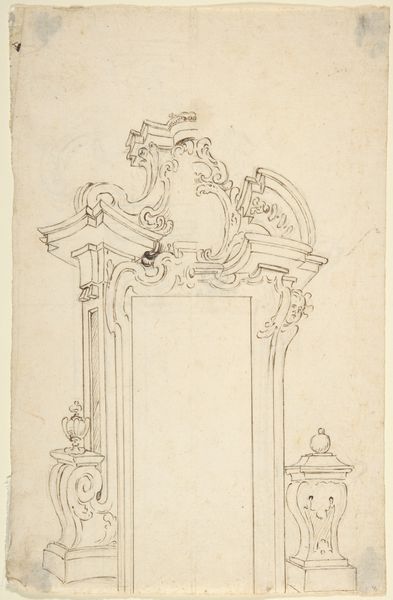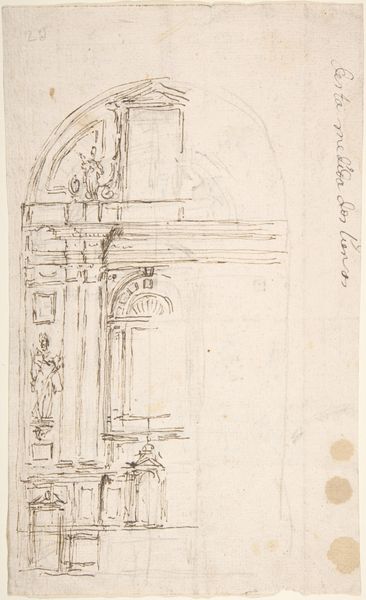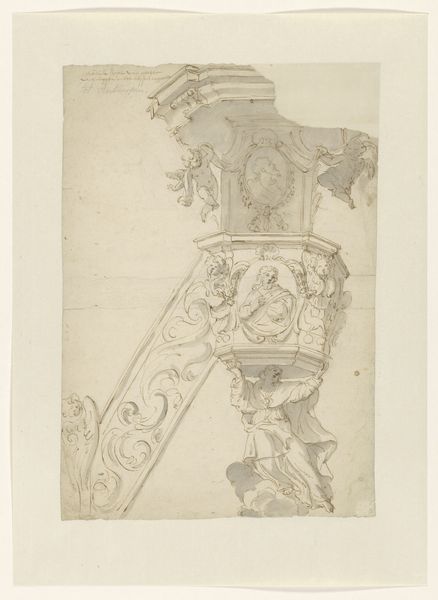
drawing, print, paper, ink, pencil, chalk, pen, architecture
#
drawing
#
baroque
# print
#
etching
#
paper
#
ink
#
pencil
#
chalk
#
pen
#
architecture
Dimensions: 141 × 193 mm
Copyright: Public Domain
Editor: We’re looking at "Architectural Sketches," an ink, pencil, and chalk drawing on paper from around 1720 by Canaletto, held at the Art Institute of Chicago. It feels so fragile and incomplete; a ghost of a building. What do you see in this piece, especially considering its historical context? Curator: Beyond the architectural elements, I see a subtle commentary on power structures. The Baroque period was marked by grand, imposing architecture intended to communicate the authority of the ruling class and the Church. Editor: That’s interesting, I hadn’t considered it that way. Curator: Consider how the incompleteness of these sketches disrupts that intended message of stability and permanence. It almost feels subversive, doesn't it? Could it be read as a critique, perhaps unconscious, of those structures by showcasing their underlying fragility, reminding us that they are, after all, just constructions? Who benefitted from these grand designs? Editor: It does give you pause. I suppose the incomplete nature destabilizes it, right? Especially when viewed through today’s lens. Is it right to assume it makes commentary of Baroque excess? Curator: It opens a dialogue, doesn't it? The piece encourages us to question whose stories are privileged in architectural history and whose labor was often exploited to erect these monuments. Editor: I never would have considered that just from looking at some lines on paper! Curator: Exactly! It demonstrates the potency of art as a critical tool. How might understanding the history and labor associated with this style help us view urban spaces differently today? Editor: Wow, I’ll never look at Baroque architecture the same way again. Thank you. Curator: My pleasure. The historical narrative constantly evolves, and these sketches offer a vital, nuanced piece of that evolving understanding.
Comments
No comments
Be the first to comment and join the conversation on the ultimate creative platform.
